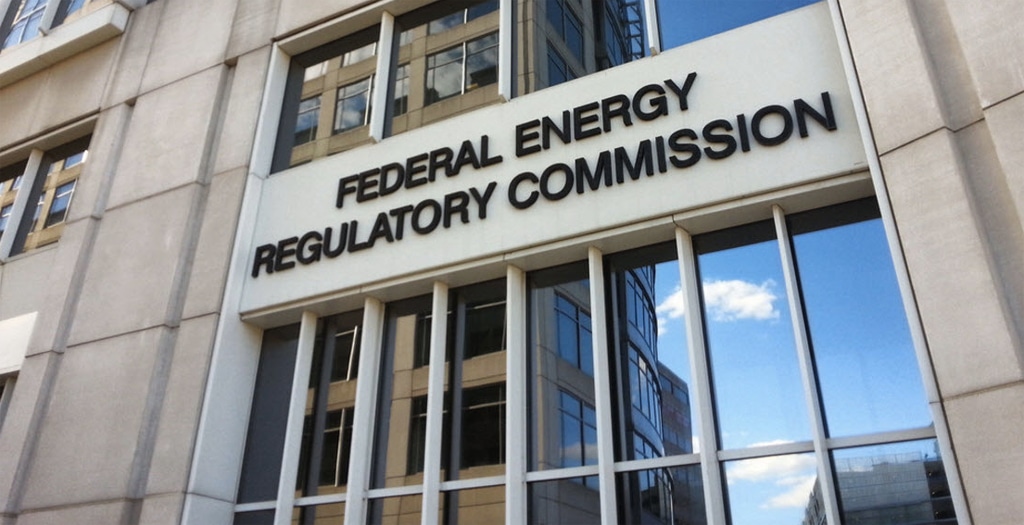Improving utility-scale bifacial modeling best practices: Researchers from Array Technologies, PV Lighthouse, and CFV Labs recently concluded a long-term bifacial solar field study. The goal was to define current modeling limitations and vaildate inputs based on real-world testing. Accurate modeling of utility-scale bifacial PV is essential to set realistic expectations for the technology’s performance. Most utility-scale software programs, including PVsyst, use a simplified 2D View Factor model to calculate the irradiance contribution from the rear side of a bifacial module. Modelers interested in exploring bifacial use can download this technical brief to improve power yield calculations. Download the brief from Array Technologies here.
FERC losing commissioner with no replacements in sight: When Federal Energy Regulatory Commissioner Bernard McNamee departed Friday, the agency was left with the bare quorum of members, and there’s little indication that President Donald Trump’s two recent FERC nominees will be promptly confirmed. With McNamee walking out the door, just three FERC commissioners remain: Chairman Neil Chatterjee and Commissioners James Danly and Richard Glick. In July, Trump announced he would nominate two new commissioners to FERC: Democratic nominee Allison Clements of Ohio who previously served as director of the Natural Resources Defense Council’s Sustainable FERC project. Trump also nominated Mark C. Christie to fill a Republican seat. Christie is the chairman of the Virginia State Corporation Commission. The typical time between the President’s announcement of intent to nominate and the subsequent confirmation by the Senate has been about three to four months during the Trump Administration. Source: Law360, JDSupra
Puerto Rico chooses solar over gas in grid redesign: The Puerto Rico Energy Bureau approved a long-term energy plan for the island’s sole electric utility, the Puerto Rico Electric Power Authority (PREPA). The Integrated Resource Plan (IRP) rejected the majority of PREPA’s planned gas buildout and directed the utility to invest in large amounts of solar and energy storage. In the wake of devastating hurricanes in 2017, the Energy Bureau directed PREPA to find a way to make Puerto Rico’s electricity grid more affordable and hurricane-resilient. PREPA submitted a plan that defied the people of Puerto Rico’s demands for transformative change to protect their communities and avert climate catastrophe. PREPA timidly proposed a move from imported oil to imported gas, continuing decades of fossil fuel dependence, pollution, and high costs. It also ignored a new law that committed Puerto Rico to 100% renewable energy by 2050. Read more analysis on the Puerto Rico IRP by the Earth Justice legal team in this fact sheet.
U.S. clean power giants to join forces to build lobbying muscle: Some of the biggest U.S. clean-energy companies are joining forces with the nation’s top wind-power trade group to create a new lobbying organization ahead of a presidential election that could tip federal policy in favor of renewables. The new group, called the American Clean Power Association, will include industry titans such as NextEra Energy, Avangrid and Berkshire Hathaway Energy. Source: Bloomberg
This content is protected by copyright and may not be reused. If you want to cooperate with us and would like to reuse some of our content, please contact: editors@pv-magazine.com.








By submitting this form you agree to pv magazine using your data for the purposes of publishing your comment.
Your personal data will only be disclosed or otherwise transmitted to third parties for the purposes of spam filtering or if this is necessary for technical maintenance of the website. Any other transfer to third parties will not take place unless this is justified on the basis of applicable data protection regulations or if pv magazine is legally obliged to do so.
You may revoke this consent at any time with effect for the future, in which case your personal data will be deleted immediately. Otherwise, your data will be deleted if pv magazine has processed your request or the purpose of data storage is fulfilled.
Further information on data privacy can be found in our Data Protection Policy.